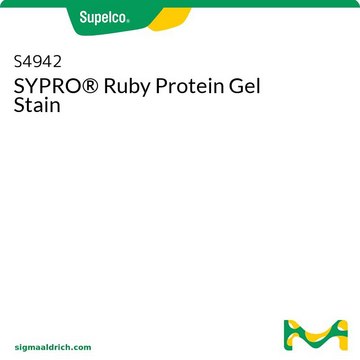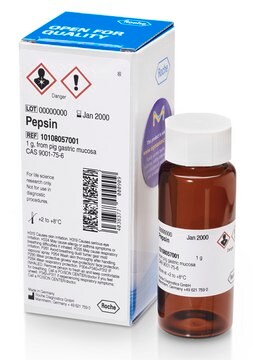RAB0326
C-Peptide EIA Kit
for serum, plasma, culture supernatant and cell lysates
Sinónimos:
C-Peptide
About This Item
Productos recomendados
species reactivity
human, mouse, rat
packaging
kit of 96 wells (12 strips x 8 wells)
technique(s)
ELISA: suitable
enzyme immunoassay: suitable
input
sample type plasma
sample type cell lysate
sample type culture supernatant(s)
sample type serum
assay range
inter-assay cv: <15%
intra-assay cv: <10%
sensitivity: 772 pg/mL
standard curve range: 0.1-1000 ng/mL
detection method
colorimetric
shipped in
wet ice
storage temp.
−20°C
Gene Information
human ... INS(3630)
General description
Immunogen
Application
Please refer to the attached General ELISA KIT Procedure (sandwich, competitive & Indirect ELISA)
Biochem/physiol Actions
Los componentes del kit también están disponibles por separado
- RABHRP3HRP-StreptavidinSDS
signalword
Warning
hcodes
pcodes
Hazard Classifications
Met. Corr. 1
Storage Class
8A - Combustible corrosive hazardous materials
Elija entre una de las versiones más recientes:
Certificados de análisis (COA)
Lo sentimos, en este momento no disponemos de COAs para este producto en línea.
Si necesita más asistencia, póngase en contacto con Atención al cliente
¿Ya tiene este producto?
Encuentre la documentación para los productos que ha comprado recientemente en la Biblioteca de documentos.
Nuestro equipo de científicos tiene experiencia en todas las áreas de investigación: Ciencias de la vida, Ciencia de los materiales, Síntesis química, Cromatografía, Analítica y muchas otras.
Póngase en contacto con el Servicio técnico








